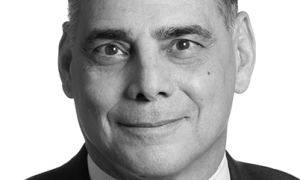Today one general stands watch over
America. He runs the United States Northern Command. That sounds
impressive, but he has little real authority.
His domain, NORTHCOM, needs to become a full-service homeland
security headquarters, to bolster other homeland security programs
and serve as an important vehicle for defense transformation. Right
now, though, it lacks the strong vision, resources and
inventiveness necessary to bring much to the war on
terrorism.
NORTHCOM was created under the Pentagon's Unified Command Plan
(UCP), which lays out the geographic boundaries and functions of
the various U.S. commands worldwide. In the wake of Sept. 11, the
Joint Chiefs of Staff rushed out a new version establishing
NORTHCOM as a single headquarters responsible for North America. It
was the first time Canada, Mexico and the United States were
assigned to any regional command.
But more than a year later, the command has done little more than
set up shop. So it's worth asking what it should be doing. Here are
a few suggestions:
- Support Civilian Authorities. In the past, the
Secretary of the Army coordinated Pentagon support to state and
local governments. NORTHCOM should take on part of that role now.
That will allow the command to establish solid working
relationships with the other federal agencies and state and local
governments it must work with in responding to a large-scale
disaster or terrorist attack.
Provide Force and Critical Infrastructure Protection. The challenge of providing force protection for military infrastructure and the defense industrial base has grown significantly since the Sept. 11 attacks. The military likely will require a flexible, well-orchestrated and responsive system to meet future terrorist threats. It makes sense to assign NORTHCOM overall responsibility for setting general force protection levels, balancing competing needs, assessing compliance and testing preparedness. - Take Greater Responsibility. Currently,
NORTHCOM has only a very limited ability to command and control any
nationwide operations. This could make future missions difficult to
manage. One way to extend NORTHCOM's capabilities would be to
establish a network of sub-regional commands to work with local
authorities. They could serve as the nucleus for joint task forces
capable of responding to a large-scale disaster or terrorist
attack.
- Work With Other Agencies. NORTHCOM now
maintains only a small liaison office in the Pentagon, but it would
benefit from the creation of a senior deputy commander and a staff
assigned to the capital region. That person would also coordinate
with the Department of Homeland Security and other federal
agencies.
- Ensure Better Training. Current homeland
security training is a mess. There is little standardization, much
duplication, huge gaps and inadequate integration. NORTHCOM could
serve as the focal point for homeland defense military training.
Its expertise could help many civilian initiatives such as
developing mission-essential task lists, establishing multi-echelon
training centers, implementing training documentation systems and
developing senior professional education.
- Take Command. NORTHCOM has few forces directly
under its control. As NORTHCOM looks to the future, it should
revise its force requirements and consider how many people should
be assigned to various headquarters. In its planning, NORTHCOM
should consider the unique requirements for homeland security
missions.
- Support Improvements to Homeland Security. NORTHCOM should also play a key role in transforming the U.S. military from a force designed for the Cold War to one prepared to meet future security challenges. Operational practices, concepts, technologies and force structures designed to serve one region could well be applied to others. There are several areas, in fact, where NORTHCOM could lead the transformation effort. Intelligence sharing, interagency coordination, maritime surveillance, force protection, air defense and missile defense are just a few areas where NORTHCOM could develop the blueprint for other commands on implementing network-centric concepts.
Homeland security forces should be well prepared to deal with catastrophic attacks, but also trained to do other military missions. Unfortunately, the current force structure uses National Guard forces that are not fully trained for war-fighting tasks; they would have to be reorganized quickly to respond to a major terrorist strike.
So far, the Pentagon has provided only a limited vision of how NORTHCOM might improve domestic security over the long term. There is a lot more that can and must be done to ensure our homeland remains safe.
James Carafano, author of the book "Waltzing into the Cold War: The Struggle for Occupied Austria," is a senior research fellow for defense and homeland security at The Heritage Foundation (heritage.org).

